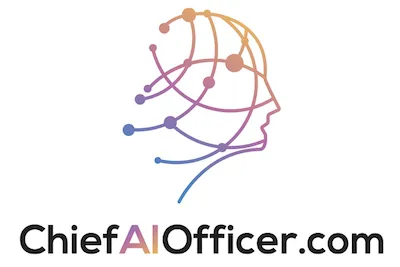Standard Chartered is deeply invested in leveraging artificial intelligence and machine learning across risk modeling and management operations, centering on automation, speed, regulatory compliance, and reducing human error while maintaining ethical and governance standards.
Through partnerships with technology firms like Fosfor, Standard Chartered achieved 30% reduced effort in enterprise risk analytics and 4x faster end-to-end model management. AI-driven document verification resulted in 40% fewer compliance breaches and much faster case resolution times.
This isn’t just banking technology improvement. This is a blueprint for AI-powered risk transformation that demonstrates how artificial intelligence creates regulatory advantages through predictive analysis rather than reactive compliance management.
The 40% Compliance Breach Reduction
Standard Chartered achieved 40% reduction in regulatory breaches through AI-driven document verification and automated compliance monitoring that identifies violations before they occur rather than discovering them during audits.
The reduction achievement demonstrates how AI creates compliance capabilities that traditional manual review cannot achieve through continuous monitoring and predictive violation detection.
Financial institutions that rely on periodic compliance reviews will find themselves regulatory-risk-exposed compared to AI-enhanced continuous monitoring that prevents breaches through real-time analysis.
The 4x Model Management Acceleration
Standard Chartered achieved 4x improvement in end-to-end process for deploying risk models through automated model lifecycle management that centralizes version control, scheduling, and country-specific risk analysis.
The acceleration reveals how AI creates risk management efficiency that traditional approaches cannot achieve through systematic automation and intelligent workflow optimization.
Banks that maintain manual model management processes will find themselves deployment-limited compared to AI-enhanced automation that accelerates risk model implementation and optimization.
The 30% Risk Analytics Efficiency Gain
AI automation reduced effort in enterprise risk analytics by 30% while enabling around-the-clock model deployment for real-time risk factor assessment across diverse regions and regulatory environments.
The efficiency gain demonstrates how AI creates risk analysis capabilities that traditional approaches cannot match through continuous operation and intelligent resource optimization.
Financial institutions that use traditional risk analytics will find themselves analysis-limited compared to AI-enhanced systems that provide continuous risk monitoring and assessment.
The Real-Time Risk Monitoring Intelligence
ML infrastructure enables continuous model deployment for real-time risk factor assessment and management across diverse regulatory environments without operational delays or manual intervention.
The monitoring intelligence reveals how AI creates risk oversight capabilities that traditional periodic review cannot achieve through continuous analysis and immediate response optimization.
Banks that rely on scheduled risk assessments will find themselves exposure-vulnerable compared to AI-enhanced real-time monitoring that identifies and addresses risks immediately.
The NLP-Driven Compliance Automation
Natural language processing scans and reviews contracts, policies, and financial statements, extracting key compliance clauses while flagging policy violations for review without human document analysis.
The automation capability demonstrates how AI creates compliance intelligence that manual review cannot achieve through comprehensive document analysis and violation detection.
Financial institutions that maintain manual compliance review will find themselves accuracy-limited compared to AI-enhanced analysis that identifies compliance issues consistently and thoroughly.
The Predictive Financial Crime Detection
Machine learning models evaluate evolving financial crime patterns to anticipate and highlight risks, improving detection of money laundering and unauthorized transactions before they occur.
The detection capability reveals how AI creates financial crime prevention that traditional transaction monitoring cannot achieve through pattern recognition and predictive analysis.
Banks that use reactive fraud detection will find themselves security-vulnerable compared to AI-enhanced prediction that identifies criminal activity patterns before transactions complete.
The Automated Transaction Monitoring
AI continuously analyzes transaction data to detect anomalies and potentially fraudulent activities while reducing false positives and ensuring compliance with global regulations.
The monitoring automation demonstrates how AI creates transaction oversight that traditional rule-based systems cannot achieve through intelligent pattern recognition and adaptive analysis.
Financial institutions that rely on static transaction rules will find themselves detection-limited compared to AI systems that adapt to new fraud patterns and reduce false alerts.
The Responsible AI Framework
Standard Chartered enforces Responsible Artificial Intelligence Standard ensuring all AI deployments meet fairness, transparency, accountability, and ethics requirements through regular audits addressing bias and reliability issues.
The framework approach reveals how banking AI implementation requires ethical governance rather than pure efficiency optimization when maintaining regulatory compliance and customer trust.
Banks that implement AI without ethical frameworks will face regulatory and reputational risks compared to responsible approaches that integrate ethics into AI risk management.
The Governance Protocol Integration
A responsible AI council combines expertise from data privacy, security, and risk management to review and approve every AI model used for risk analysis, ensuring comprehensive oversight.
The protocol integration demonstrates how successful AI risk implementation requires systematic governance rather than departmental deployment when achieving regulatory compliance and operational reliability.
Financial institutions that lack comprehensive AI governance will face implementation risks compared to systematic approaches that ensure responsible AI deployment across risk management functions.
The Generative AI Enhancement
Standard Chartered uses generative AI tools like SC GPT to enhance productivity, automate risk reporting, and improve risk modeling efficiency through robust governance that minimizes bias and ensures transparency.
The enhancement capability reveals how advanced AI creates risk management capabilities that traditional tools cannot provide through intelligent automation and analysis optimization.
Banks that limit AI to traditional applications miss opportunities for generative enhancement that provides superior risk analysis and reporting capabilities.
The End-to-End Lifecycle Automation
Automated ML lifecycle management supported by cloud-based and open-source technologies eliminates manual processing in risk model development, deployment, and monitoring.
The automation approach demonstrates how AI risk transformation requires comprehensive lifecycle management rather than isolated tool implementation when achieving operational efficiency.
Financial institutions that maintain manual model lifecycle management will find themselves efficiency-limited compared to automated systems that optimize entire risk modeling processes.
The Real-Time Analysis Capability
Continuous monitoring reduces manual processing in risk assessment while providing immediate risk factor identification and response across global banking operations.
The analysis capability reveals how AI creates risk responsiveness that traditional batch processing cannot achieve through immediate identification and automated response coordination.
Banks that use periodic risk analysis will find themselves response-delayed compared to AI-enhanced real-time systems that provide immediate risk intelligence and intervention capability.
The Regulatory Reporting Automation
AI-verified reports provide higher accuracy regulatory reporting through automated analysis that eliminates human error while ensuring compliance with complex international banking regulations.
The reporting automation demonstrates how AI creates regulatory compliance that manual reporting cannot achieve through systematic accuracy and comprehensive analysis.
Financial institutions that rely on manual regulatory reporting will find themselves accuracy-challenged compared to AI-enhanced automation that ensures compliance and reduces regulatory exposure.
The Fraud Detection Acceleration
AI enables faster real-time detection and response to suspicious activity through predictive analysis that identifies fraudulent patterns before transactions complete or investigations begin.
The detection acceleration reveals how AI creates security capabilities that traditional fraud management cannot achieve through immediate pattern recognition and response optimization.
Banks that maintain reactive fraud investigation will find themselves security-limited compared to AI-enhanced prediction that prevents fraudulent activity through early detection.
The Operational Cost Optimization
AI reduces operational costs through automation of compliance and risk tasks while improving accuracy and speed of risk management across global banking operations.
The cost optimization demonstrates how AI creates financial benefits that extend beyond efficiency improvement to include risk reduction and regulatory compliance enhancement.
Financial institutions that view risk management as cost center miss opportunities for AI optimization that reduces both operational expense and regulatory exposure.
The Industry Collaboration Strategy
Standard Chartered engages in knowledge-sharing with regulators and industry partners to shape responsible AI use in risk management, establishing industry standards and best practices.
The collaboration strategy reveals how AI risk leadership requires industry engagement rather than isolated implementation when establishing regulatory frameworks and competitive standards.
Banks that implement AI risk management independently miss opportunities for industry influence and standard-setting that collaborative approaches provide.
The Technology Partnership Leverage
Partnerships with technology firms enable advanced AI capabilities without requiring internal development that would delay implementation and limit competitive advantage capture.
The partnership approach demonstrates how banking AI transformation leverages existing capabilities rather than building proprietary solutions when achieving rapid implementation and competitive positioning.
Financial institutions that attempt internal AI development will achieve slower implementation compared to strategic partnerships that provide immediate access to advanced AI capabilities.
The Competitive Banking Advantage
Standard Chartered’s AI risk capabilities create competitive positioning through superior compliance, faster risk assessment, and more accurate fraud detection that traditional banking approaches cannot match.
The advantage reveals how AI transformation affects competitive dynamics by enabling risk management capabilities that traditional approaches cannot achieve at comparable speed and accuracy.
Banks that delay AI risk implementation will find themselves competitively disadvantaged compared to AI-enhanced institutions that provide superior risk management and regulatory compliance.
The Risk Management Evolution
AI transforms risk modeling from reactive analysis to predictive management that identifies and addresses risks before they impact operations or regulatory compliance.
The evolution demonstrates how AI changes fundamental approaches to banking risk by enabling prevention rather than detection when managing financial crime and regulatory exposure.
Financial institutions that maintain traditional risk approaches will find themselves exposure-vulnerable compared to AI-enhanced prediction that prevents rather than responds to risk events.
The Strategic Investment Philosophy
Standard Chartered’s AI risk investment represents strategic commitment to regulatory excellence and competitive advantage rather than limiting focus to operational efficiency alone.
The investment philosophy demonstrates how market leaders approach AI as fundamental business strategy rather than technology enhancement when creating sustainable competitive advantages.
Banks that limit AI investment to efficiency projects miss opportunities for strategic transformation that comprehensive AI implementation provides through risk management excellence.
The Future Banking Reality
Standard Chartered’s AI success establishes banking reality where artificial intelligence becomes essential for competitive risk management rather than optional technology enhancement.
The future reality reveals why banking AI transformation requires immediate strategic commitment rather than gradual evaluation that delays competitive advantage while AI-enhanced institutions establish market dominance.
The choice facing every banking executive is whether to implement AI-powered risk management that predicts and prevents problems or accept competitive disadvantage to institutions that transform risk operations through artificial intelligence and predictive analysis.
The Executive Decision Framework
Standard Chartered’s AI implementation provides decision framework that banking executives can adapt for their own risk transformation and regulatory compliance requirements.
The framework prioritizes predictive risk management over reactive analysis, automated compliance over manual review, and comprehensive governance over departmental implementation.
Financial institutions that apply comprehensive AI risk strategies will achieve competitive advantages while banks focused on traditional approaches will struggle to compete with predictive risk management and automated compliance capabilities.
The evidence is compelling: Standard Chartered reduced compliance breaches by 40% and accelerated risk modeling by 4x through AI that predicts and prevents problems before they occur. The strategic choice facing every banking executive is whether to implement predictive AI risk management or accept competitive disadvantage to institutions that transform risk operations through artificial intelligence rather than maintaining traditional reactive approaches to compliance and fraud detection.




